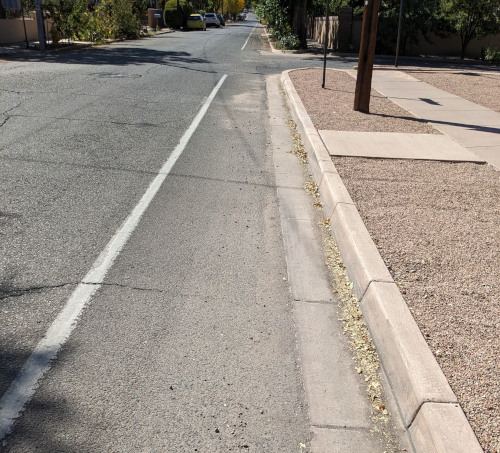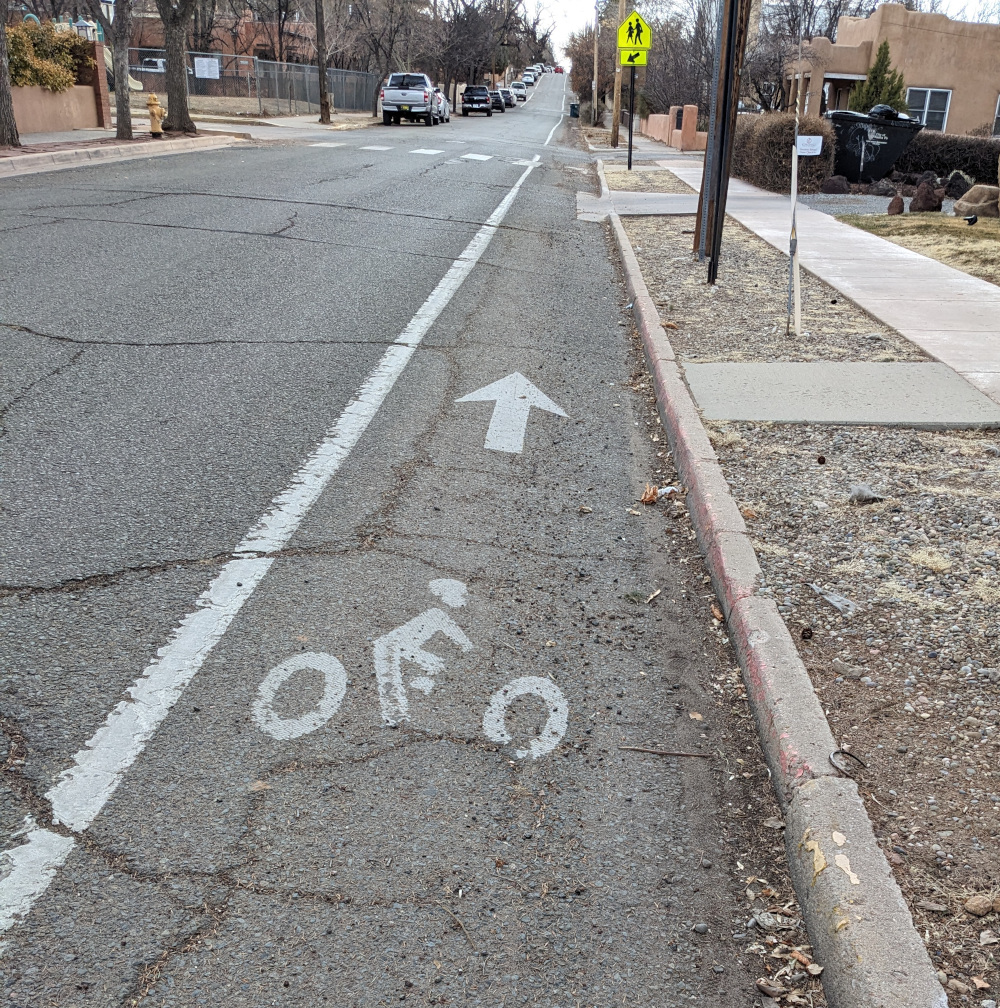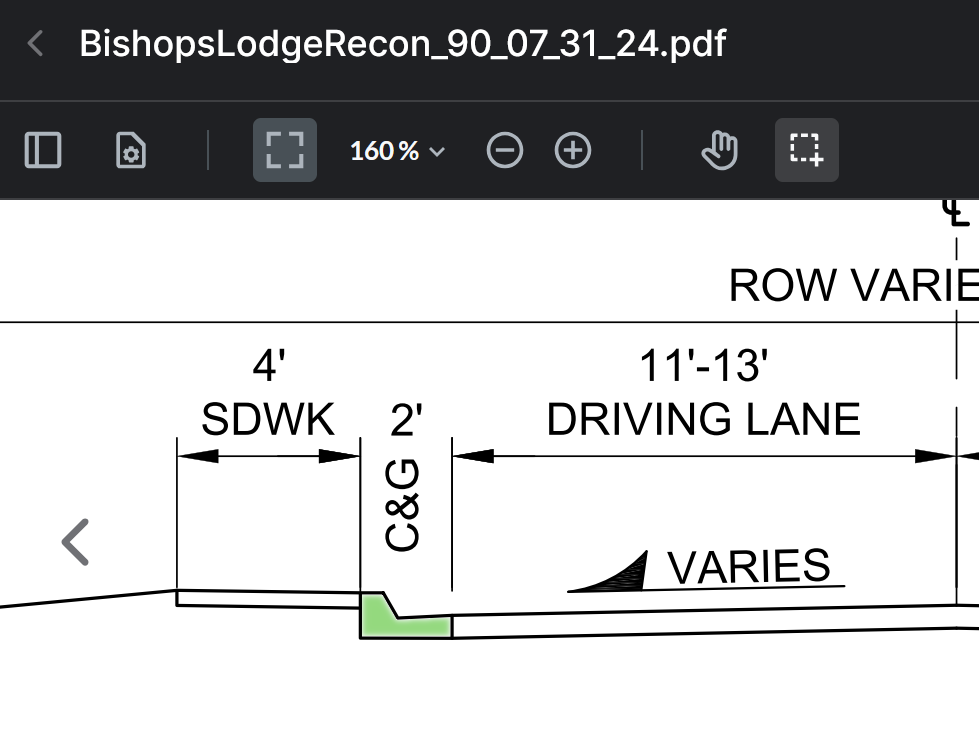Many streets and roads have an unprotected bike lane, defined
by a white line, typically 3 or so feet wide as measured from
the curb. Most of these have a 14-16" gutter attached to the curb,
so that there is a seam between the concrete and the asphalt.
In the example shown here, the seam is in good condition, but
in most places, this seam is the place where the asphalt crumbles
first, and on some streets, when the asphalt was repaved, there
can be a 1-2" height difference between the asphalt and the gutter.
Cyclists have to avoid these seams, and are therefore forced to
ride further away from the curb, closer to passing traffic.
|

|
The solution is of course not rocket science:
On the next block, you can see that the gutter part can be
eliminated, extending the asphalt right up to the curb. Here
you can ride closer to the curb, away from passing trucks.
Also note there are cracks in the asphalt, but none where the
asphalt meets the curb.
The question is, where in the chain from planning to construction
is the decision made to build one or the other, and can we make the
no-gutter design the default construction?
|

|
| Here is a typical example from the Oct 10 2024 BPAC meeting.
The only function of the curb-and-gutter appears to be to collect
debris and to
endanger bikers.
The goal is to ensure that when engineering drawings get made, the default should be curb-no-gutter.
This is low-hanging fruit, and costs nothing.
| 
|